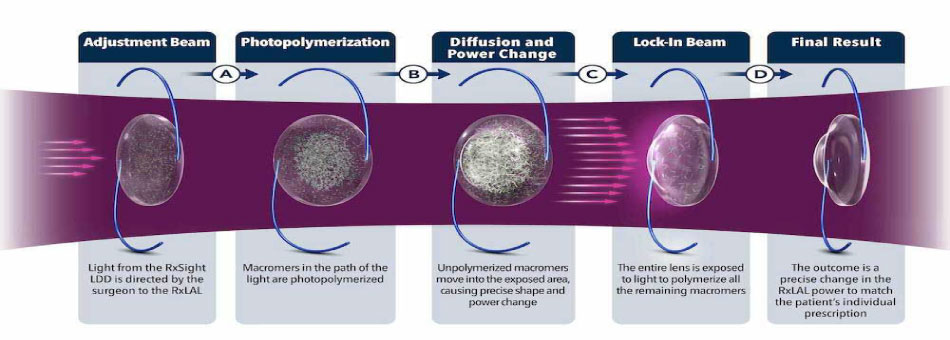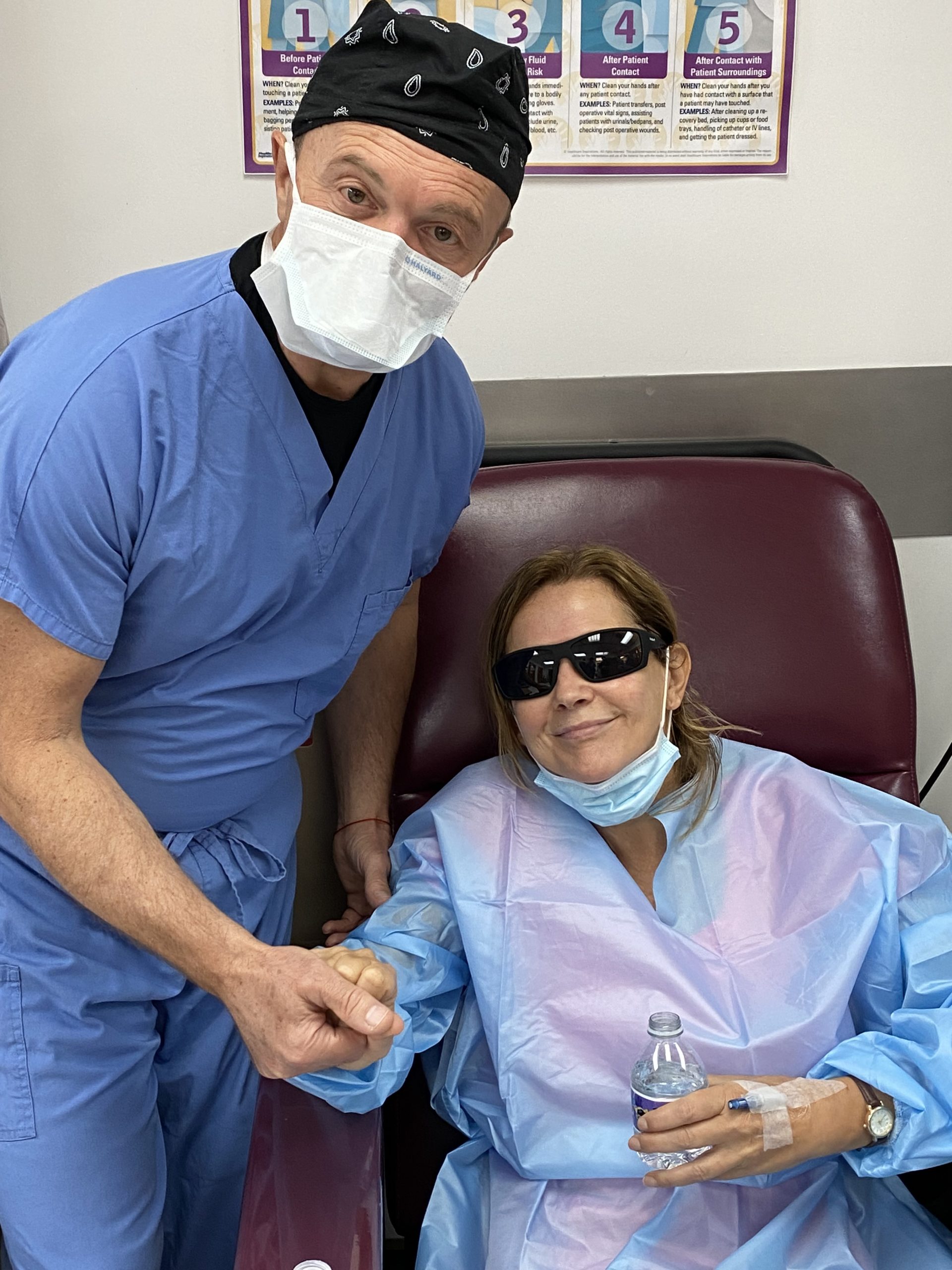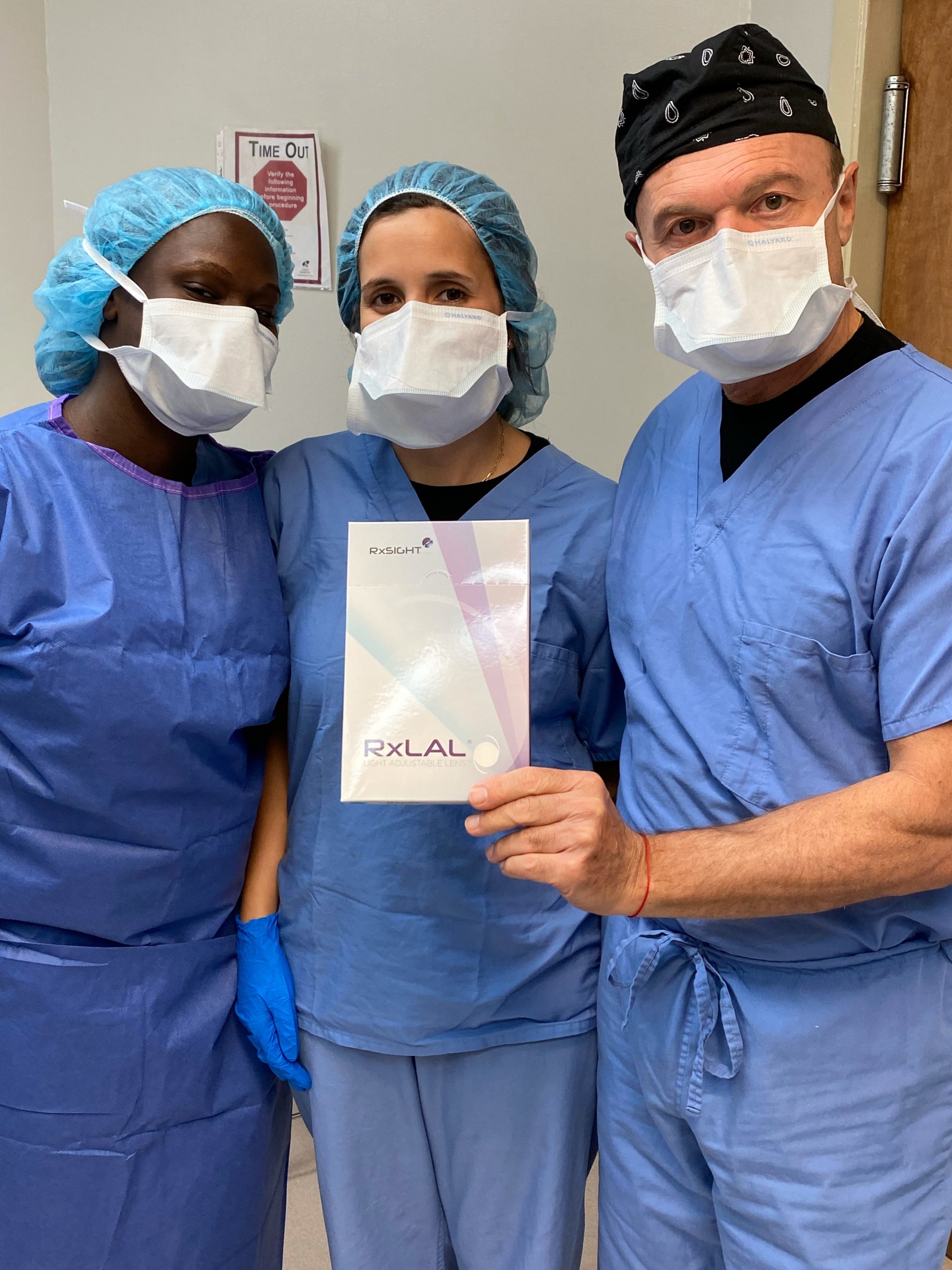Ophthalmologists have many innovative new options to offer their patients for cataract surgery or vision correction options such as refractive lens exchange. Laser-assisted cataract removal makes cataract surgery more precise, more predictable, and better than ever before. Many surgeons also now offer premium IOLs, such as the Panoptix IOL or Toric IOLs, which may allow patients undergoing cataract removal to see at all distances, even up close without glasses.
Leonard Bley, MD of NY LAISK Laser & Microsurgery Center has been a NYC leader in cataract, surgery, LASIK and lens replacement surgery for over two-decades. He has recently been selected by RxSight™ to be one of only a few surgeons in the country, and the first surgeon with offices in Manhattan, Brooklyn and Queens, to have Light-Adjustable Lens (LAL) technology to offer to his patients.

Doctor Bley Performs the First LAL procedure in NYC


The Light-Adjustable Lens (LAL) manufactured by RxSight™ has multiple applications including for those undergoing cataract removal and those over 40 starting to experience a condition called Dysfunctional Lens Syndrome (DLS). DLS is a term used by ophthalmologists to describe lens failure with the last stage being full blown cataracts. DLS causes patients to experience near vision loss (usually after the age of 40) or nighttime glare and/or halo issues.
Dysfunctional Lens Syndrome (DLS) is categorized in three stages, which aids in patient education.
Stage 1: 40–50-year-olds
- Lens starts to stiffen, loses focusing power
- Loss of near vision
- Development of nighttime glare or halos
Stage 2: 50 years and older
- Loss of accommodation, which leads to complete loss of near vision and the need for reading glasses and/or bifocals
- Light scatter formation degrading vision, especially while driving at night
- Decreased contrast and night vision issues often resulting in glare and halos
Stage 3: 65 years and older
- Full cataract
- Poor visual quality
- Nucleus of the lens yellows or becomes opaque, affecting color perception
- Major glare and halos at night
- Glasses no longer help with vision improvement
The Light Adjustable Lens (LAL) technology introduced by RxSight™ is the first and only intraocular lens (IOL) that allows ophthalmic surgeons to make adjustments following cataract surgery. This can allow patients to have the best possible corrected vision for distance in their dominant eye and if they wish for independence from reading glasses, the surgeon can adjust their non-dominant eye for reading vision.
The LAL is a three-piece silicone lens that is implanted just like a monofocal lens implant, except the LAL is made with a special photoreactive silicone, permitting surgeons to adjust a patient’s prescription after implantation by using a specialized Ultra-Violet (UV) light or Light Delivery Device (LDD). This technology is also ideal for patients undergoing cataract surgery or refractive lens exchange due to dysfunctional lens syndrome (DLS) that had previous vision correction surgery such as LASIK, PRK or RK that are seeking monovision or a more precise visual outcome following their cataract procedure.
In an FDA study which included 600 patients, those who received the LAL lens were twice as likely to achieve 20/20 vision without glasses, compared to those who received a standard monofocal lens.
Who’s an Ideal Candidate for the Light Adjustable Lens (LAL)?
The ideal candidates for Light Adjustable Lens implants are patients that are concerned about their best possible distance vision, a patient wanting monovision, or patients with a history of corneal surgery including LASIK, PRK, or RK for irregular corneas..